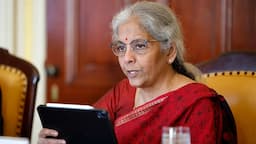Education Post’s Managing Editor Rohit Wadhwaney goes deep to understand the sudden violence that swept over tens of thousands of foreign students in Kyrgyzstan, the sparks that triggered the anger, and the fear that continues to loom, even as the exotic Central Asian country’s Ambassador to India Askar Beshimov, and Bishkek’s International Medical University Vice Dean and Head of International Department Zhumaliev Barsbek give assurances that the situation, which got aggravated due to misinformation and bad press, is now completely under control.
It was before midnight. The air was crisp and clear. The stars shone bright. Traffic went about its way on the perfectly tarmacked roads. Pubs, cafes and nightclubs were packed with revelling party-goers. May 17, 2024: It seemed like a perfectly normal day in Kyrgyzstan’s capital city of Bishkek – known for its stunning untamed landscapes, lush parks, Russian-style buildings and city squares, friendly people, delightful food… and highly affordable medical colleges.

But then, within a matter of minutes, the dreamy Central Asian country, regarded as among the most democratic and liberal of the post-Soviet states, suddenly transformed into a “living hell” for more than 50,000 foreign students pursuing a medical degree there. Hundreds of Kyrgyz locals, “armed with stones and batons,” stormed hostels and went on a rampage, breaking dormitory doors, smashing windows and beating up any foreign students they could get a hold of, particularly Indians, Pakistanis and Bangladeshis who make up for almost 80% of the foreign student population in Kyrgyzstan.
Now, what had just happened? To understand this, we need to go back a few days. On May 13, a small group of Kyrgyz locals and foreigners got into a fight over a seemingly trivial issue. As it turned out, the foreigners involved in the fight were all Egyptians. And someone had made a video of the brawl. That video was posted on popular Kyrgyz social media sites and it went viral by the morning of May 17, with some social media posts claiming that some of the foreigners in the fight were Pakistanis. This angered the Kyrgyz, who are anyway against foreigners working in their country illegally. Just a couple of months earlier, in March, Kyrgyz authorities had launched a campaign to find and deport illegal migrant laborers – some 1,500 Pakistanis and 1,000 Bangladeshis were caught.
The rumors on social media were enough ammunition for the Kyrgyz men to get riled up. And so, they gathered in hordes and started attacking anyone who looked South Asian. The Indian students – near about 17,000 – found themselves stuck in the middle of this skin tone-based stereotyping.
The attack
Even before the mass attack, Kyrgyz authorities could sense that something untoward was about to go down. Student residents received messages from their college administrations advising them to switch off all lights, barricade themselves and stay indoors.
“The administration said there appears to be a threat to international students and they must refrain from leaving the premises of their hostels. But then we saw on TikTok that a large group of locals was gathering and marching towards our hostel,” Korish Malik, a 24-year-old Pakistani student, recalled. WhatsApp groups were buzzing with messages from terrified students, amplifying the fear and anxiety Almost 1,000 locals, he said, had gathered outside the city’s VIP Hostel where more than 800 Indian, Pakistani, Bangladeshi and Egyptian students were staying. Police arrived and cordoned off the building’s front gate, but the angry mob was too large for the cops – sans riot gear – to control. The crowd barged into the hostel from the emergency exit.
Korish and his three roommates hid in their room – their lights switched off; a sofa, a desk and a couple of chairs stacked against the door – on the fourth floor of the five-storey building. They could hear loud noises of doors banging, glass shattering, and people howling from the other floors. “Those were the most terrifying eight hours of my life,” he said.
When it fell silent, Korish and his mates stepped out of their room to find the building vandalized – the doors were broken, windows were smashed, and several of their hostel mates had been brutally attacked. “It was obvious the mob was there to create chaos and spread terror,” Korish said.
Foreign students across the country, even miles away from Bishkek where the violence first erupted, faced the wrath of the Kyrgyz locals. One MBBS student, who hails from Indore, told Education Post that he took a taxi from his private accommodation to the university campus hoping to stay safe, but “throughout the taxi ride, the driver kept telling me that he wanted to beat me up.”
Locked in
“We have been locked indoors since May 17. We have no food to eat. We’ve been surviving on cucumbers and tea,” Waquar, a sixth-year medical student, was quoted as saying by a leading newspaper on May 20. He said that when he stepped out to get some food on May 19, he was chased and hit by locals.
Fayzan Ahmed, a Telangana-based medical student in Bishkek, said that students had been told to not step out of their accommodation, and in case they had to, they must carry their visas and passports. “But the locals weren’t asking for passports. They were targeting any and every South Asian they could spot,” he told Education Post, adding that at least three of his friends had been injured in the attacks.
And even though the violence was curbed in most parts of the Kyrgyz capital by the morning of May 19, the threat of violence was very much in play. Several international students from India and Pakistan claimed to have received WhatsApp messages from unknown numbers that said: “I wish you leave this country faster, it will not seem enough to you now, in the evenings we will punish you harshly.”
Hundreds of foreign students fled Kyrgyzstan after the violence broke out, and universities were forced to shift all classes to online mode.
People changed
Ujjain’s Ravi Sarathe, a medical student who returned to his home in Madhya Pradesh after the wave of violence swept over foreign students, said: “It was a nightmare. We never thought something so extreme could happen. Overnight, the behavior of locals changed and they refused to offer any help. It was frightening.”
Sarathe’s college mate Rohit Panchal, also from Ujjain, told a leading Indian national daily that he, along with 17 other students from Madhya Pradesh, boarded a bus from Bishkek on May 21 and crossed over the border to Kazakhstan to escape the violence. “We were lucky to escape,” Panchal said, recalling how local children jeered at them while they were boarding the bus.
“There was no sign of the violence stopping and we felt a section of local people had developed a sense of hatred for us. Those who were once friendly turned violent. The videos circulating on social media were frightening and we were extremely worried for our safety,” Vivek Sharma, who returned to Madhya Pradesh with the group, was quoted as saying.
And as instigating messages on social media apps spread like wildfire, the violence wasn’t just limited to places that were housing foreign students. A group of about 70 Kyrgyz men broke into a sewing factory in Bishkek early on May 18 and attacked foreign workers, mostly from India, Pakistan and Bangladesh.
But Kyrgyz authorities maintain that no Indians were injured in the attacks.
More fuel?
Comments from the country’s President Sadyr Japarov and head of security forces Kamchybek Tashivev, as reported in the media, weren’t of much help in subduing the anger amongst locals.
President Japarov, according to some media, vaguely blamed “forces interested in aggravating the situation,” saying: “The demands of our patriotic youth to stop the illegal migration of foreign citizens and take tough measures against those who allow such activities are certainly correct.”
Meanwhile, security chief Tashiyev said that the main demands of the hundreds of Kyrgyz men who were on the streets on May 17-18 “concerned an increase in the number of foreigners working in our country, an increase in the number of students and workers from Bangladesh, Pakistan, India, Egypt and other countries.”
“I believe that the demands of the guys who gathered (on May 17-18) are, to some extent, correct,” he was quoted as having said.
Misinformation
Zhumaliev Barsbek, Vice Dean and Head of International Department of Bishkek’s International Medical University, squarely blamed the violence on “misinformation in the media, which led to the escalation of the conflict.”
“This false information caused panic and provoked heightened ethnic tensions and socio-political unrest, which unfortunately escalated into attacks targeting foreign nationals, including Indian students,” Barsbek told Education Post in an email.
The government of Kyrgyzstan put the blame on a small group of criminal elements for the violence, and said that the chief, along with nine officers, of the Internal Affairs Directorate of Bishkek’s Sverdlovsk district were removed from their positions after the riots.
“Do not let an isolated event put you off from visiting Kyrgyzstan. The incident does not reflect the overall safety of the country or the warm hospitality of the Kyrgyz people,” Ulanbek Totuiaev, the Ambassador of Kyrgyzstan in Islamabad, said at a press conference.
“The embassy urges representatives of the mass media not to disseminate unreliable and unverified information,” he said, adding that “destructive forces in foreign mass media, social networks, especially in the territory of Islamic Republic of Pakistan deliberately spread totally wrong information” about the situation in Kyrgyzstan that did not correspond to reality.
Learning curve

In an email interview to Education Post, Kyrgyzstan’s Ambassador to India Askar Beshimov confirmed that the situation was completely under control and the safety of citizens, foreign students and public order was assured.
“Violence or anger is not common among our people. The criminal acts of individuals have nothing to do with the culture and traditions of hospitality,” Beshimov said, while admitting that the “appearance of a large number of foreigners in a country always causes some kind of tension in society, and Kyrgyzstan is no exception in this regard.”
“Maybe there hasn’t been enough outreach work in Kyrgyz society. In any case, the events that occurred (on May 17-18) were a difficult lesson for us, and we are drawing conclusions and working to ensure that such things do not happen again in the future,” the Kyrgyz Ambassador said.
















